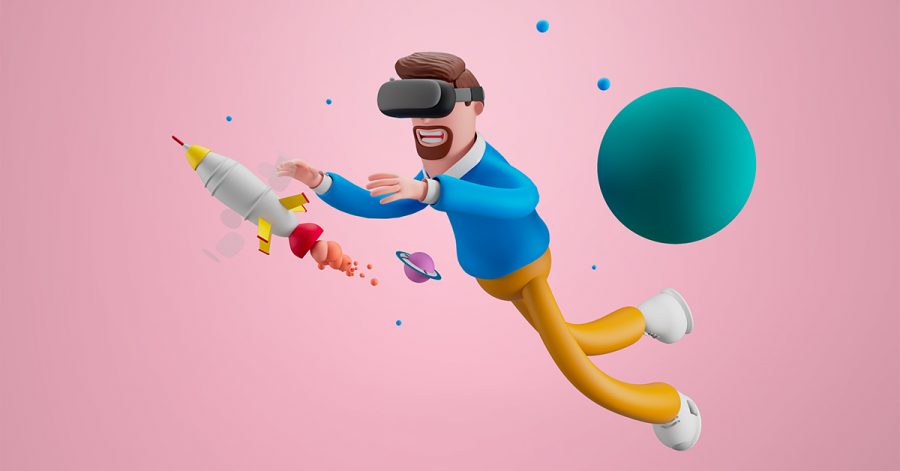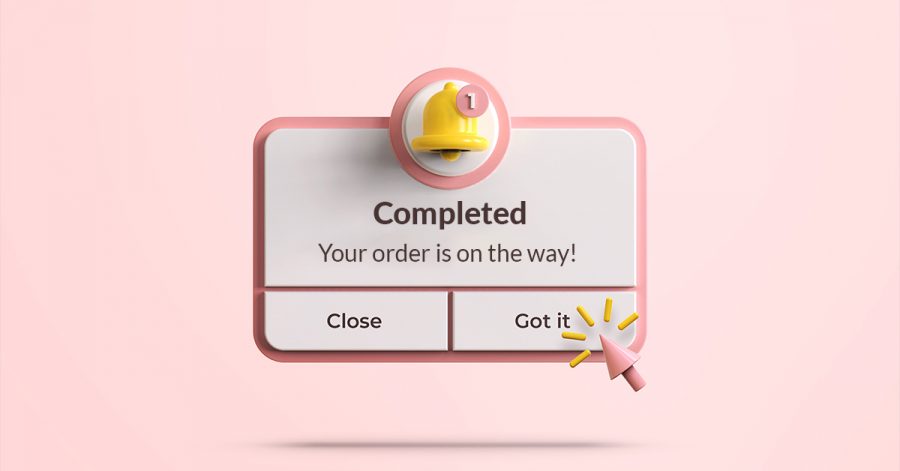The latest trends in UI / UX design
9 min read

9 min read

By Milica Stankić
The concepts of UX (User Experience) and UI (User Interface) are actually over 70 years old. However, it is only recently that they have been given the attention they deserve. One of the main reasons for this is the fact that the combination of UI and UX design is the key to a clear and enjoyable customer experience.
UI design takes care of interface presentation while maintaining a consistent style and logic and at the same time the interaction of the product with the end-users. On the other hand, UX design is responsible for users’ emotional response by making the product easily accessible, adaptable, and functional.
What both UX and UI have in common is the need for constant development. New trends spring up seasonally, often radically changing previous ideas upside down. No wonder it is difficult to keep up with all the trailblazing directions in this field.
In the following sections, you will get to know 7 important design trends that are currently shaping the development of UX and UI. By integrating these newest trends, you can create a website or an app that attracts more and more visitors and keeps their interest lively and strong.
The main goal of virtual reality is to immerse people in a lifelike and realistic experience. Therefore, a UX/UI designer must ensure that the overall layout is as organic and intuitive as possible. Although VR is now mostly associated with the gaming industry or innovative product lifecycle management – it still counts as one of the main UX trends. From virtual exhibition rooms to sophisticated research and test scenarios − VR is steadily beginning to gain acceptance in mechanical engineering, shipping, and the automotive industry.
By integrating virtual design elements into physical space, developers enable users to interact more deeply with the product.
Augmented Reality has enormous potential, especially for brands that sell their products online or are active in the education, media, or entertainment industries. Examples of AR applications in these areas are virtual changing rooms or interactive learning tools. Companies such as IKEA and L’Oréal use augmented reality to enable their customers to try out products and enjoy the overall experience. AR apps are also being used more and more in road traffic and navigation.
Expanding the possibilities of UX design for mobile devices and offering a richer experience for users, AR removes all physical barriers in the interaction between users and the application. This completely changes the communication experience with a brand.
At the same time, developments in the direction of a decentralized Internet (Web3 and Metaverse) based on blockchain technology are making rapid progress and will certainly expand many other technical innovations in dealing with VR and AR over the next few decades.

The use of voice assistants such as Google Assistant, Amazon Alexa, and Siri has become commonplace and their popularity just keeps growing. Voice control and voice search may soon compete with the usual and traditional methods.
“Screen first” has long been a guiding principle for many companies. This means that initial contact with a website was assumed to be via a computer. Today, mobile devices and voice-controlled solutions are on the rise. Similarly, you must customize voice-enabled applications to make them suitable for an app.
The main advantage of the voice user interface (VUI) is that it saves time and eliminates the need to enter text into the user interface.
Modern technologies offer enormous possibilities here. It is therefore worthwhile to identify the elements on a website with which users can interact with their voice and to implement appropriate options here. They are useful because you can give them direct instructions and get immediate results. The times when you had to laboriously enter some text into an interface are finally over.
VUI is therefore becoming more and more important. If you give your users the opportunity to interact with your website via voice control, this will typically be very well received, as it noticeably improves the user experience not only for the younger generations but also for the elderly.
While this trend has been on the scene for many years, there will definitely be changes in 2022. Currently, there is a tendency to use uniformly sized 3D inserts. However, these increase the loading time of the page or the start time of the mobile application. Therefore, designers in 2022 are likely to focus on smaller frameworks to speed up launch time. But why do we even need 3D elements? Some of the many reasons are to improve usability, and attract attention, but also to complement the design, and add originality.
3D design can also be used to create many different things in terms of design and make your content unique. This way, elements can be emphasized, but it can also be an upgrade to a new level! When combined with VR and AR you can create hyperrealistic 3D visuals that enable more engagement and inclusiveness.
The 3D trend makes websites quite more compelling. A distinctive visual design engages the audience and makes full use of the available space. It can be assumed that 3D elements keep the user on the page longer and also significantly improve indexing by search engines.
Mobile devices are becoming more and more versatile on a daily basis and offer users countless possibilities which make our busy everyday life easier. This means that when developing web projects, you should prioritize mobile users and, if possible, create a mobile version of your website or even an app.
Mobile devices are now responsible for more than half of all search queries. People use their smartphones for a variety of activities, as it is just a quick and easy way to find almost anything out – from grabbing coffee at the nearest coffee shop, ordering food, doing banking to connecting with those around them.
Therefore, your website UI design needs to look amazing on any screen size and not just the desktop version. Keep the mobile-first approach in mind when creating your content to increase customer retention and keep your audience engaged with your web pages. Failure to do so will often turn people away from your campaign and result in lower search engine rankings and engagement.
Micro-interactions are small events on a webpage, animations created by UX designers that lead to a big difference in user experience. Their goal is to give website visitors feedback, strengthen customer loyalty, initiate interactions, and much more.
When used correctly, micro-interactions make apps and websites, booking process, onboarding, or login exciting and contribute to an emotional bond with the user.
For many international online shops and apps, this form of human-machine interaction has long been one of the noteworthy UX trends, while they consciously use micro-interactions. But there are still many parts where good micro-interactions are not yet widespread – so it is clearly a noteworthy UX trend for 2022.
Good micro-interactions can delight users as they welcome them and encourage interaction. A quirk of micro-interactions is that technical and machine content is given a human touch. They become tangible and understandable and bring joy. Bookings and ordering processes turn more natural and appealing, even if the other person is still an AI.

How many times have you just couldn’t remember your password? It has happened too often, especially as more and more sites require to log in, and it is too demanding a job to remember all of them.
One of the main UI designs that have resurfaced after the pandemic is frictionless authentication. To simplify − it is about different ways of communication with computers or mobile devices without touching them. Some of them include VUI, others are controlled by using your hand movements or fingerprints. This Air Gesture Management is a method that takes usability to a new level with various gesture control systems.
Closely related to the previous is also the field of localization of content and user experience. And it just continues to be at the forefront of UX and UI design trends. While it used to be enough to consider the interests of the target group, personalization is now becoming way more precise, which makes it possible to take into account the needs of each individual user. Artificial intelligence and machine learning make the overall process much easier. Thanks to these technologies, it is possible to analyze human behavior and recommend relevant content.
Based on collected data about the preferences and behavior of the users, UI/UX designers can tailor the experience individually.
Netflix is probably the clearest example of this trend. This is where personalization significantly improves the user experience. When browsing through the never-ending offer, users are in danger of drowning in the abundance of films and shows to watch. Netflix will show suggestions for movies and series that are similar to the content users are streaming.
That brings us to the end of the ongoing UX and UI trends for 2022. Many of these are not new and some, such as 3D or AR & VR, have already been present for a while. But technical progress and user habits promise a further increase in all the trends mentioned here and more digital experiences than ever before.
UX and UI design in 2022 will increasingly depend on user experience. The use of artificial intelligence makes it possible to analyze individual needs and create the right solutions. Particular attention should be paid to micro-interactions and trends in terms of visual design should also be taken into account. Both UI and UX designers thrive on creative ideas that inspire people. Therefore, creative designers regularly look for new developments and technologies for a better customer experience.
Sources:
https://userguiding.com/blog/ux-ui-trends/
https://aufaitux.com/blog/ui-ux-design-trends/
https://www.codica.com/blog/latest-ui-ux-design-trends/
https://en.99designs.de/blog/news-trends/ux-design-trends/
https://fireart.studio/blog/10-leading-ui-ux-design-trends-to-dominate-in-2021/